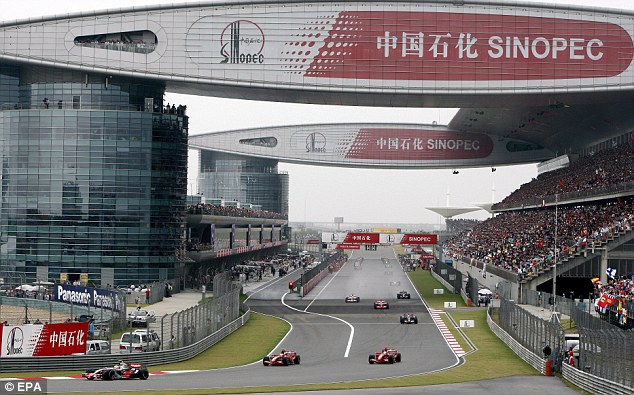The Chinese Grand Prix
Race day is almost upon us. This Sunday, April 17th, China will host its 13th Chinese Grand Prix. Held at the Shanghai International Circuit, the Chinese round of the Formula One World Championship was first run in 2004. At a cost of $240 million the 5.4km Shanghai circuit was the most expensive in the world when it was opened. Designed by the legendary Hermann Tilke to be at the cutting edge of racing technology it has quickly earned itself a reputation as a tough circuit to race on featuring rapid changes from deceleration to acceleration and some of the trickiest corner combinations in Formula One.

China dreams of speed
The Chinese governments desire to see F1 in China started in the 1990’s with the original plan being to host the race in Zhuhai, Guangdong Province. Unfortunately after 9 years of development the Zhuhai International Circuit was deemed not up to scratch by the FIA after having originally been scheduled to be a part of the 1998 F1 calendar. Unperturbed, the government enlisted the help of the experienced race organisers of the established Macau Grand Prix. They were determined to get things right second time around and in 2004 the Shanghai International Circuit was opened and the Chinese Grand Prix became a reality with a 7 year contract signed to host the race until the 2011 season.
Lewis Hamilton is the event’s most successful driver having won it 4 times and Ferrari its most successful constructor, also at 4 wins. Lewis came under fire last year when he sprayed the hostess with champagne (pictured below).
The first running of the race in 2004 saw a rare win by veteran driver Rubens Barrichello as part his most successful season in Formula One. The 2006 race was won by Michael Schumacher, his last victory in Formula One shortly before his retirement from the sport at the end of that year.

Racing, with Chinese characteristics
Chinese symbolism is embedded in the track architecture in a number of novel ways. The track itself is designed to resemble the Chinese character 上 (shang) meaning ‘high’ or ‘above’. Red and gold, auspicious colours in China, are present throughout the tracks design. The team buildings are arranged as pavilions in a lake in homage to the Yuyuan Garden in old Shanghai and the classical gardens of Suzhou. The main spectator grandstand is flanked by two red towers in reference to the pairs of lions you will often see ‘guarding’ many Chinese buildings.
However it hasn’t all been smooth sailing for Chinese F1 fans. The threat of cancellation has loomed over the loss-making race in the past. Despite a maximum spectator capacity of 200,000, attendance has never been as high as it was for the inaugural race in 2004. Only in February 2011 was a new deal signed to allow China to continue hosting the race until 2017. The key sticking point between Chinese officials and the FIA appeared to be the fee the race organisers were required to pay to F1 to host the race. Reportedly one of the highest fees paid to host an F1 race, the race organisers refused to pay it in light of year on year losses. A new deal was negotiated and the fee reduced allowing F1 to stay in China.
The future of F1 in China
The FIA has its sights set on growing the popularity of the sport in Asia and their are now 5 Asian countries hosting races on the F1 calendar: Malaysia, Singapore, Korea, Japan and China. The NBA and the English Premier League currently dominate in terms of TV ratings but they don’t have a regular event based in China like Formula One does. Many believe the key to well and truly cracking the Chinese market is to find ‘China’s Michael Schumacher’. Chinese driver Ma Qinghua has come the closest being enlisted as a test driver for HRT in 2012 and Caterham in 2013. If the Chinese can produce a quality driver then F1 could enjoy popularity comparable to that generated for tennis when Li Na was playing in her prime.